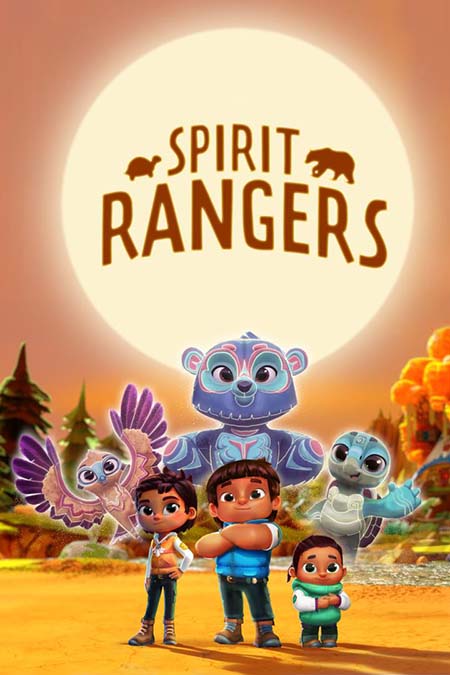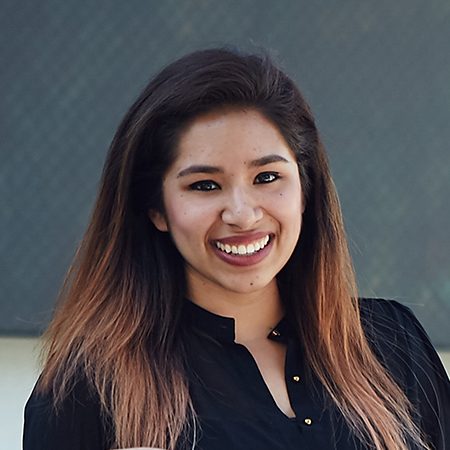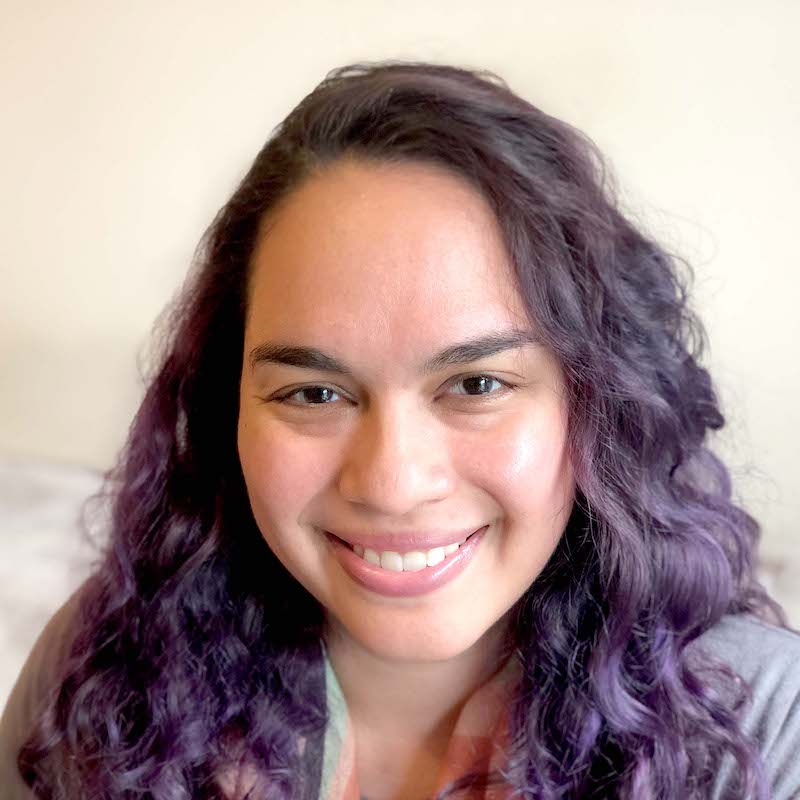
- Details
- By Monica Whitepigeon
For decades, Native youth have had to grow up with limited representation in the media and in the entertainment industry. Hollywood portrayals of Native people have ranged from villains who attack white settlers in Westerns, to helpful but silent friends who aid the story’s main heroes, many of which perpetuate harmful stereotypes. However, audiences are witnessing a beautiful movement towards more diverse and equitable programming, especially for younger generations. Native people are transitioning to studio positions and leading creative development teams to show off their storytelling abilities, while reaching wider audiences with various streaming platforms along the way.
 “Spirit Rangers” creator Karissa Valencia. (Courtesy Karissa Valencia)Last fall, Netflix announced the development of a new children’s show, “Spirit Rangers,” from creator Karissa Valencia (Chumash). The fantasy-adventure preschooler series follows the Skycedar children, Kodiak, Summer and Eddy, who share a family secret: they can transform into their own spirit animals, or “Spirit Rangers,” to protect their National Park. With the blessing of the Chumash and Cowlitz tribes, the Skycedar kids embark on fantastical adventures with their spirit animals, which are inspired by Indigenous legends.
“Spirit Rangers” creator Karissa Valencia. (Courtesy Karissa Valencia)Last fall, Netflix announced the development of a new children’s show, “Spirit Rangers,” from creator Karissa Valencia (Chumash). The fantasy-adventure preschooler series follows the Skycedar children, Kodiak, Summer and Eddy, who share a family secret: they can transform into their own spirit animals, or “Spirit Rangers,” to protect their National Park. With the blessing of the Chumash and Cowlitz tribes, the Skycedar kids embark on fantastical adventures with their spirit animals, which are inspired by Indigenous legends.
“Spirit Rangers” consists of an all-Native writing team and will feature Native artists, actors and composers. Production company Laughing Wild and executive producer Chris Nee previously worked with Valencia on “Vampirina” and have helped bring “Spirit Rangers” to life.
Valencia spoke with Native News Online to give more insight into how this creative endeavor occurred.
Tell me a little bit about yourself.
I’m a member of the Chumash Tribe. She/her pronouns. My parents are divorced so I like to say I have two hometowns, San Diego and the Chumash reservation located in Santa Ynez, California. Half my family is Mexican, and the other half is Native American.
My tribe generously funded my education and I’m so grateful for it every day. I attended the University of San Diego for my undergraduate degrees and Syracuse University for graduate school. I feel lucky that I’ve always known I wanted to be a writer and storyteller. In school, I studied Creative Writing and Screenwriting where I had the chance to explore my voice as a writer. I quickly found that my writing voice feels most at ease when writing supernatural, fantastical or animated projects. It wasn’t until I moved to Los Angeles that I found my home and writing community in animation.
Have you always liked animation? What animations inspire you?
I absolutely love animation. When I was a kid, I was swept up by fantastical worlds like Miyazaki’s “Spirited Away” or the humor and music from 90s Disney films like “Beauty and the Beast.” I love monsters, magic, mythology, fantasy, and superheroes. Growing up, I adored characters who felt like “the other” because I saw myself in them. As a woman and a person of color, I often feel like “the other” due to the lack of representation on screen. Feeling this way is what inspired me to pursue a career as a television writer.
What made you want to create a Native children’s show? How did you get involved with Netflix?
Working at Disney Junior made me fall in love with the preschool space. I had the opportunity to work with Chris Nee on “Vampirina” and was inspired by her groundbreaking storytelling and her leadership. During this time as a staff writer, I was spending my weekends putting together the world of “Spirit Rangers” and prepping to pitch. So when Chris started at Netflix, and she asked me to pitch my dream show, I shared “Spirit Rangers” with her and never looked back. Now, I am absolutely living my dream job every day.
Can you tell us about the characters in “Spirit Rangers”? Is anyone based on someone you or other writers know?
The Skycedar family is what I wish I saw on TV as a kid. They’re funny, they laugh, argue, joke, and love each other just like every other family. They wear contemporary clothing, use technology, but also celebrate and embrace their Indigenous culture!
My sister and I grew up exploring trails, lakes and state parks on Chumash territory. Thanks to my dad’s storytelling of the animals and spirits that live there, I always believed our homelands were full of Native magic. Those adventures greatly inspired the characters for Spirit Rangers.
It’s also an absolute honor that the Cowlitz and Chumash gave their blessing for us to base the Skycedar family on our tribes. It makes me emotional every time the kids proudly share their Chumash or Cowlitz culture in the series. While I pull from my own Chumash experience, I turn to my amazingly talented staff writer, Joey Clift, to share his story as a member of the Cowlitz tribe. Many Native kids today identify with multiple tribes, so we wanted to reflect that. I have learned so much about the Cowlitz tribe and am proud that they are part of the series.
Taking on such a creative project during a global pandemic must be challenging, to say the least. How has it been going?
All things considered, it’s going amazingly well. I’m working from home with my dog as my new writing buddy. I’m grateful to devices like Zoom because our cast and crew are from all over Indian Country. Even though we’re in different time zones, we can still come together and make this show.
The television and entertainment industry seems to be moving more towards inclusive programming from diverse storytellers. As a Native woman, what has your experience been like?
I’m very optimistic for the future of Indigenous storytelling. The Netflix and Laughing Wild team have empowered us to tell our story in our own way. “Spirit Rangers” would not be what it is today without their support. In the past, when I’ve shared ideas that are Native-inspired, the response I’ve sometimes come across is fear (fear of offending, messing up, not knowing who to ask for help, etc.). In my own personal experience, that fear is starting to subside. People are eager to learn more about other cultures and give the mic to new content creators. It’s an exciting time.
More Stories Like This
Watermark Art Center to Host “Minwaajimowinan — Good Stories” ExhibitionMuseums Alaska Awards More Than $200,000 to 12 Cultural Organizations Statewide
Zuni Youth Enrichment Project Takes Top Emerging Artist Apprentices to Phoenix for Artistic Exploration and Cultural Immersion
From Dishwasher to Award-Winning Chef: Laguna Pueblo's Josh Aragon Serves Up Albuquerque's Best Green Chile Stew
Rob Reiner's Final Work as Producer Appears to Address MMIP Crisis
Help us defend tribal sovereignty.
At Native News Online, our mission is rooted in telling the stories that strengthen sovereignty and uplift Indigenous voices — not just at year’s end, but every single day.
Because of your generosity last year, we were able to keep our reporters on the ground in tribal communities, at national gatherings and in the halls of Congress — covering the issues that matter most to Indian Country: sovereignty, culture, education, health and economic opportunity.
That support sustained us through a tough year in 2025. Now, as we look to the year ahead, we need your help right now to ensure warrior journalism remains strong — reporting that defends tribal sovereignty, amplifies Native truth, and holds power accountable.
 The stakes couldn't be higher. Your support keeps Native voices heard, Native stories told and Native sovereignty defended.
The stakes couldn't be higher. Your support keeps Native voices heard, Native stories told and Native sovereignty defended.
Stand with Warrior Journalism today.
Levi Rickert (Potawatomi), Editor & Publisher

